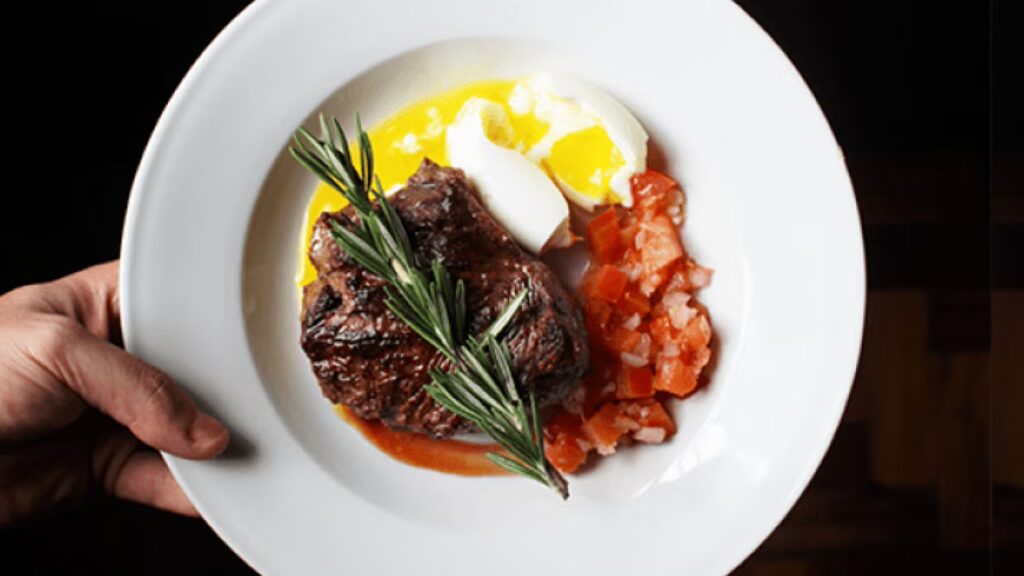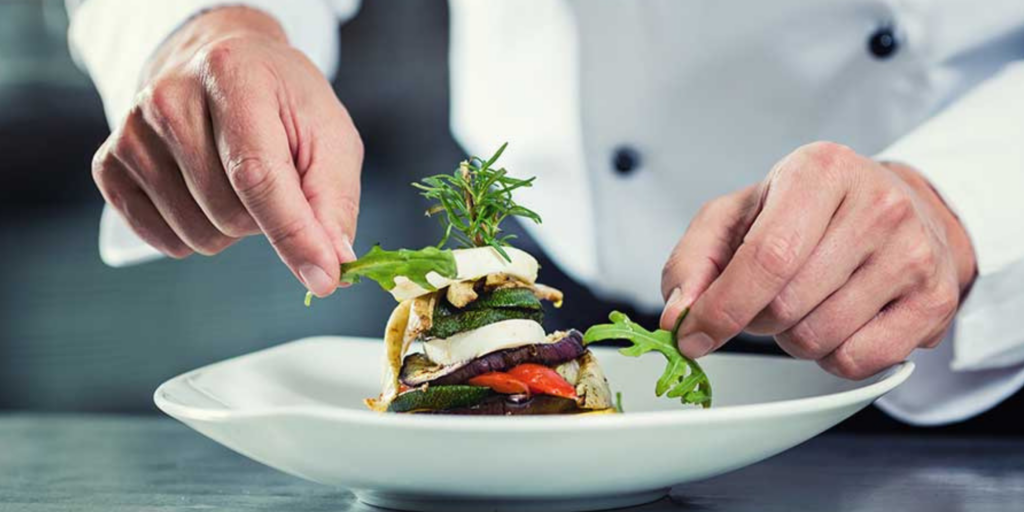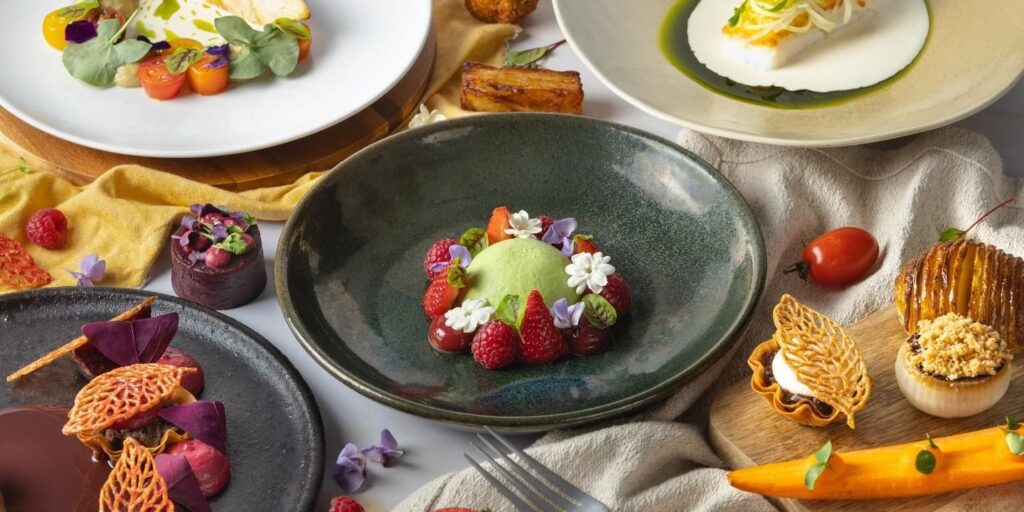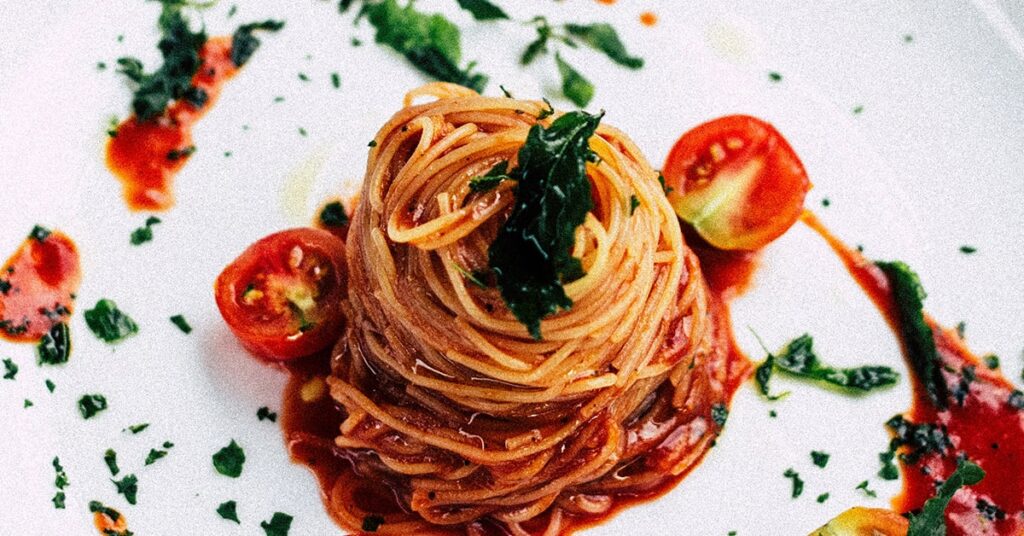Food plating and presentation are more than just aesthetic choices—they are an integral part of the dining experience. How food is arranged on a plate can elevate the meal, stimulate the senses, and enhance the overall enjoyment of a dish. From the vibrant colors to the textures and placement of ingredients, every element of food presentation plays a role in making a meal not only visually appealing but also exciting to taste. If you want to elevate your cooking skills or impress your guests, mastering the art of food plating is key.

Why Plating Matters
Food plating is about creating an experience. The first thing a diner notices when their meal arrives is the presentation—how the dish looks sets the tone for the entire meal. It’s not just about making food look pretty; well-plated food builds anticipation and excites the appetite. The way food is presented can also convey the flavors, textures, and even the story behind the dish. Good presentation engages the senses, from the colors and shapes to the smell and texture. A thoughtfully plated dish can enhance the flavors and textures by inviting the diner to approach the food in a more mindful and sensory way.

Basic Principles of Food Plating
While food plating can be as creative and artistic as you want it to be, there are a few basic principles that can guide you in creating visually appealing plates. Whether you’re plating a simple home-cooked meal or preparing for a special dinner party, these principles will help your food stand out:
- Balance
Balance is crucial to any plate of food. You want the components to be evenly distributed, ensuring that the plate doesn’t feel too crowded on one side or too sparse on the other. Balance can also refer to flavor harmony. Pairing rich, creamy ingredients with lighter, crisp elements adds balance to both taste and visual appeal. - Color Contrast
Color plays a huge role in food plating. Bright, contrasting colors make the dish visually exciting and create a sense of vibrancy. When plating, think about the color wheel. Pair warm tones like reds, yellows, and oranges with cool tones like greens and blues for contrast. For example, the bright green of fresh herbs or leafy greens can be beautifully contrasted with rich golden yellows or earthy browns. - Texture Variety
Texture contrasts are just as important as color. Combining smooth, creamy elements with crunchy, crisp ones adds interest to a dish both visually and texturally. A smooth puree, like mashed potatoes or butternut squash, looks lovely when paired with roasted vegetables or crispy fried onions. The variety of textures makes the dish feel more dynamic and satisfying. - Proportion and Size
The proportions of different elements on the plate should be considered carefully. Too much of one thing can overwhelm the plate, while too little can make the dish look unfinished. Pay attention to the size of the food relative to the plate. A large plate with a small amount of food might look empty, while a smaller plate with too much food can appear cluttered. Aim for a pleasing balance, keeping in mind the rule of thirds. - Garnishing and Finishing Touches
Garnishes should not only add visual appeal but also complement the dish. Fresh herbs, edible flowers, a drizzle of sauce, or a sprinkle of seasoning can make the dish look polished. However, don’t go overboard—garnishes should enhance, not overwhelm, the meal. A simple sprig of rosemary, a dash of freshly ground pepper, or a drizzle of olive oil can elevate a dish without making it feel cluttered.

Tools for Plating
While plating can be done with simple tools, using specialized equipment can help you achieve more precision and finesse. Here are a few tools that can enhance your plating skills:
- Plating rings or molds: These are perfect for creating uniform portions, especially when it comes to dishes like rice, mashed potatoes, or even salads. Plating rings ensure that each component is neatly stacked and presented in a visually appealing manner.
- Squeeze bottles: Ideal for creating intricate sauce designs or adding a decorative drizzle to the plate. Use them to paint patterns, lines, or dots of sauces or purees for a professional touch.
- Tweezers: Fine-tipped tweezers allow for precise placement of delicate garnishes, like herbs, microgreens, or edible flowers. Tweezers ensure that the garnishes are perfectly positioned without disturbing the rest of the dish.
- Brushes: A small paintbrush is useful for painting sauces or oils directly onto the plate. It allows for subtle, controlled application to create visually stunning plate designs.
- Small spatulas or palette knives: These tools are perfect for spreading purees or sauces evenly across the plate and can help you create smooth, elegant lines.

Techniques for Plating
Once you understand the basic principles, here are a few techniques to help you take your plating to the next level:
- The Rule of Three
The rule of three is a common guideline in plating that suggests using three elements on the plate—whether that’s three different ingredients, three components of the same ingredient, or a trio of colors. This creates a sense of visual harmony and balance. However, feel free to experiment with more or fewer elements depending on the dish. - Vertical Plating
Create height by stacking or layering components on the plate. A perfectly roasted piece of chicken or fish can be stacked on top of mashed potatoes, creating visual intrigue. Vertical plating works especially well with dishes that include several components, allowing you to layer and balance the elements while keeping the dish visually appealing. - The Circular Plating Technique
Circular plating is one of the most popular methods, where food is arranged in a circular pattern around the plate. It draws the eye to the center and creates a sense of symmetry. This technique is commonly used for dishes like risotto or pasta, where the dish can be placed in the center, and garnishes can be arranged around it. - Negative Space
Negative space refers to the areas of the plate that are left empty. It can be just as important as the food itself, helping to create a clean, well-balanced presentation. Don’t be afraid of leaving empty space on the plate—it allows the food to stand out and prevents the plate from looking overcrowded.

Examples of Plating for Different Types of Dishes
- Appetizers: Small plates are perfect for showcasing delicate bites, like sushi, tapas, or canapés. Use a minimalist approach to make each bite shine, focusing on clean lines, balanced colors, and intricate garnishes.
- Main Courses: Main dishes, like steaks or pasta, often benefit from a more rustic presentation. Aim for a central protein or focal point and build the rest of the plate around it. Use height to add dimension, and consider texture contrasts to add depth.
- Desserts: Plating desserts is a chance to get creative. From intricate chocolate decorations to vibrant fruit sauces, desserts allow you to play with textures, colors, and shapes. Consider using geometric plating styles, where the dessert is placed in a pattern or design on the plate.

